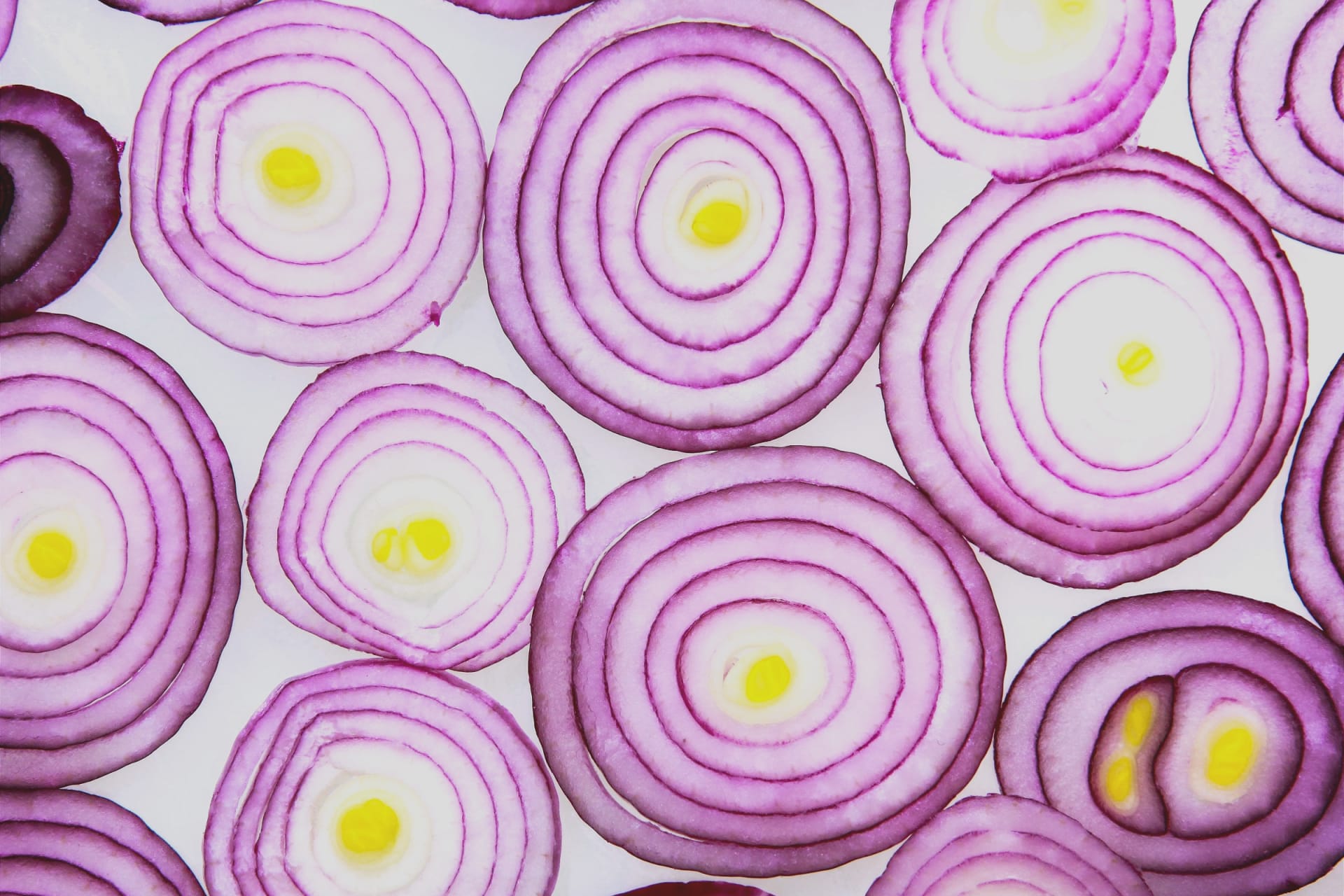If you are looking for the world’s sweetest onion, you have come to the right place. Vidalia onions are the world’s sweetest onion. But there are also Mauis, Walla Wallas, and Cipolla Rossa di Tropea Calabria. And they’re all delicious. Read on to discover the best ones to cook with! There’s a sweet onion for everyone! But which one is the best?
Vidalia onions are the “world’s sweetest onion”
The sweetest onion on the planet comes from a specific type of sulphur-free soil and mild climate in Toombs County, Georgia, where this crop is grown. This crop is one of the state’s most popular crops and boasts a unique sweet taste that is unmatched by any other variety. Known worldwide as the “world’s sweetest onion,” the Vidalia is a prized crop for its sweetness and versatility.
The Vidalia onion has been around for a long time. The first grower began selling them during the Depression, when he could get a premium price for his onions. This new crop eventually made its way to the rest of the country, and in 1984, Delbert Bland of Bland Farms started a mail-order onion business to promote the product. The Vidalia onion’s popularity led to an explosion in sales, with a total of $35 million in sales in Georgia in 1990. However, there is a lot of controversy surrounding the Vidalia onion.
The Vidalia onion is an exceptional ingredient in Indian cuisine. This mild, sweet onion is a staple in Indian cuisine and can be found in markets across Georgia. The onion is available between April and November. Seedbeds are planted in September and nurtured by rainwater and complex irrigation systems. This sweet onion is typically harvested between November and April. Its sweetness and mild flavor make it a popular ingredient in almost any recipe.
In addition to being tasty, the Vidalia onion also has health benefits. It has a higher concentration of chromium, which is an important mineral for the body’s regulation of insulin and blood sugar. Furthermore, vidalia onions are lower in carcinogenic and inflammatory properties than red onions. The onion’s allicin content prevents coronary artery disease and stroke. Additionally, it contains a moderate amount of vitamin C and isothiocyanate antioxidants, which aid in the recovery of colds and flu.
Walla Wallas
The sweet onion from Walla Washington is a medium to large bulb that is globular and slightly squat in shape. The outer skin is paper-like and yellow to light brown. Inside the bulb is the flesh which is translucent and firm with numerous rings of white. They have a sweet flavor when raw and develop a rich flavor once cooked. They are particularly suited to salads and burgers, and can be eaten raw or cooked.
The Walla-Walla Sweet Onion is officially recognized as the state’s official vegetable. While most people don’t eat the entire onion, the fourth-generation farmer of the Walla-Walla region eats it raw and in its entirety. The local supermarket, Whole Foods, advertises Walla-Walla sweet onions from Pennsylvania. Fry-Trommald, however, has been involved with the region’s Sweet Onion industry for 16 years and believes the community’s enthusiasm for the crop is well-founded.
If you are looking for a sweet onion that has a mild, garlicky taste, you can’t go wrong with a Walla-Walla variety. They are available from mid-August through August 10th. They’re best to buy them in season, as they’ll last for three to four weeks. When buying them, make sure to choose long-day varieties so you don’t end up wasting your money on bad onion plants.
If you’re in the area, make sure to stop by the Walla-Walla Farmers Market. These local markets are open every Saturday from May through October, and are known for their sweet onion quality and flavor. These local onions can be picked fresh from the fields, and the local farmers market is open every Saturday from 9 a.m. to 1 p.m., and they’re great for souvenirs.
Mauis
If you are looking for a specialty onion, look no further than Maui. Though technically onions, Maui onion are actually grown on Maui island. However, they are similar to other sweet onion varieties grown in other parts of the world. This sweet onion can be eaten raw, cooked, or even baked. Maui onions are sometimes called Kula onions. They are delicious both in salads and baked goods. Here are some ways to enjoy them on Maui.
The taste of Maui onions is similar to other types of onions grown in the U.S., although they are slightly different. The sulfur-free soil found in Maui makes the onions sweet and without astringent characteristics. They are very sweet and crisp, and can be eaten raw without tears. They are also very mild in taste, which means that they are perfect for salads and sandwiches. However, it’s not just Maui onions that are popular; other types of onions are also grown in tropical climates.
Maui onions are cultivated in the shadow of Haleakala volcano on the island of Hawaii. They are known for their mild, sweet flavor and juicy texture, and are often used by professional and home cooks alike. Maui onions are renowned for their mild flavor and are a great choice for frying and roasting. The mild taste and sweet texture of Mauis onions makes them an excellent addition to dishes, but they can also be substituted for other types of onions.
Like all onions, Mauis are mild and versatile. They can be used as a base for salad dressings, or they can be added to other dishes. They pair well with fish, seafood, and grilled vegetables. They also lend a sweet-savory presence to French onion soup and are great in salad dressings. This versatile onion also makes a wonderful addition to hummus, a savory yogurt dip. So whether you’re a fan of French onion soup or not, make sure you try Mauis next time you cook onions.
Cipolla Rossa di Tropea Calabria
The sweet flesh of the cipolla Rossa di Tropea Calbria bulb is the hallmark of this IGP. Cipolla is valued for its organoleptic qualities – its taste, smell, and sight. Its distinct sensory characteristics make it sought-after in international markets. Although not the main driver of Calabrian agriculture, Cipolla Rossa di Tropea Calabria is an important economic, social, and cultural resource.
The cipolla Rossa di Tropea Calabria IGP is classified as a protected geographical indication by the European Union (CE) under Regulation CE n. 284/2008. It is certified by the Institute for Ecology and Environment (I.C.E.A.). It is a type of red wine that is grown and harvested in diverse areas of Calabria.
Cipolla Rossa di Tropea is renowned for its rich flavor, lightness, and sweetness. It is also known as a typical Mediterranean fruit because of its high content of quercetina and other nutrients. It is often used in marinades, as well as in salad dressings, and is a must-have for any culinary traveler. This fruit is also highly prized by locals because of its antioxidant properties.
This onion is cultivated in climatic conditions of coastal medium-high Tyrrhenian, the provinces of Cosenza, Catanzaro, and Vibo Valentia. It grows best on fresh, loamy soil that overlooks the sea. The physical composition of the onion is determined by climatic conditions along the upper-minian coast of Calabria.
The cipolla rossa from Tropea is sweet, croccant, and amatissa. It is used for many dishes, including baccala al forno, ciambottino, and pasta. Cipolla Rossa di Tropea is a popular staple in the local cuisine, and its cultivation in this region dates back to the fenicio period. It has since spread throughout the Tirreno region.
Oignon doux des Cevennes
Oignon doux des Cevennes AOP is the most widely used French onion, and it is recognizable for its satined white skin and delicate flavor. It is extremely versatile, being equally delicious cooked, grilled, and raw. Its high sugar content makes it very nacreous and easy to caramelize. Its distinctive features make it a highly sought-after ingredient in gourmet cuisine, and chefs often refer to this onion in their cooking.
Oignons doux des Cevennes are renowned for their distinct taste and texture. They are rich in antioxidants, as well as being immune system boosters and anti-oxidants. They are also low in calories, and their original actions help promote healthy cardiovascular system and digestive systems. The only downside to the distinctive texture of these delicious mushrooms is that they can be difficult to find in supermarkets. Therefore, it is important to know exactly where to find these oignons and where to purchase them.
Oignon doux des Cevennes PDO is a protected appellation that spans an area of fifty ha. It is grown in terrace parcels between 300 and 600 metres in altitude. It is produced by 80 growers under the cooperative Origine Cevennes. The region produces about 2600 tonnes of Oignon per year. It is harvested in late spring and late summer and segued during the winter.
The production of Oignon doux des Cevennes is not in large quantities and has been unchanged for centuries. Harvesting is manually done on parcels that are exposed to the south. Harvesting is carried out when the oignon has about 3/4 leaves. The density is low, with just eight or nine plants per square meter. However, new irrigation systems are allowing farmers to more efficiently manage apports. It is not a coveted French ingredient, but it can be an excellent addition to any gourmet meal.

